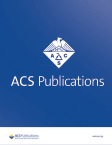摘要 PO3-05-08:VERITAC评估维替孕酮(一种PROteolysis TArgeting Chimera (PROTAC)雌激素受体(ER)降解剂)治疗ER阳性/人表皮生长因子受体2(HER2)阴性晚期乳腺癌的最新结果
IF 3.4
Q2 PUBLIC, ENVIRONMENTAL & OCCUPATIONAL HEALTH
引用次数: 0
摘要
背景:Vepdegestrant(ARV-471)是一种口服PROTAC ER降解剂,对野生型和突变型ER具有活性。一项1/2期研究(NCT04072952)的2期扩展研究(VERITAC)在重度预处理的ER+/HER2-晚期乳腺癌患者中测试了两种剂量的Vepdegestrant(200毫克,每日一次[QD]和500毫克,每日一次)。与500 mg QD相比,维普地孕酮200 mg QD具有可比的疗效和良好的耐受性,且ER降解作用强(数据截止日期:2022年6月6日),因此被选为3期单药治疗剂量。我们将在额外随访12个月后提供维普地孕酮200 mg QD队列的最新数据。研究方法ER+/HER2-局部晚期/转移性乳腺癌患者既往接受过≥1次内分泌治疗且治疗时间≥6个月、≥1次细胞周期蛋白依赖性激酶(CDK)4/6抑制剂治疗且≤1次化疗方案治疗后,对其服用维普地孕酮。主要终点是临床获益率(CBR;证实完全应答、部分应答或病情稳定≥24周的比率)。研究结果截至2023年6月6日,35名患者接受了维替孕酮200毫克/天的治疗,其中34人(97.1%)为女性,中位年龄为63岁(42-79岁)。在所有情况下,患者既往接受过的治疗方案中位数为 4 种(范围:1-9),在转移性情况下,既往接受过的治疗方案中位数为 3 种(范围:0-7);100% 的患者既往接受过 CDK4/6 抑制剂治疗,88.6% 的患者既往接受过芳香化酶抑制剂治疗,74.3% 的患者既往接受过氟维司群治疗,74.3% 的患者既往接受过化疗(转移性情况下为 45.7%)。在所有可评估的患者(35人)中,使用维普司群200毫克QD的CBR为37.1%(95% CI:21.5-55.1),在24名基线时有可测量疾病的患者中,客观反应率为8.3%(95% CI:1.0-27.0)。所有可评估患者的中位无进展生存期为 3.5 个月(95% CI:1.8-8.2)。截至数据截止日,200 毫克 QD 组群中有 14 名患者接受了≥24 周的治疗(4 名患者接受了≥48 周的治疗),1 名患者仍在接受治疗。没有患者因治疗突发不良事件(TEAE)而需要减少剂量;2例(5.7%)患者因TEAE而停用维地孕酮(3级QT延长和3级贫血)。最常见的治疗相关不良事件(≥10%)是疲劳(43%)、潮热(20%)、恶心(17%)、关节痛(11%)、天门冬氨酸氨基转移酶升高(11%)和血碱性磷酸酶升高(11%);所有不良事件均为1/2级。使用维替孕酮200毫克QD治疗后,突变ESR1循环肿瘤DNA水平显著下降,并持续多个治疗周期。研究结论从第一份数据报告开始,经过12个月的额外随访,在接受过大量预处理的ER+/HER2-晚期乳腺癌患者中观察到了维普地孕酮200毫克QD的持久临床活性,以及循环突变ESR1肿瘤DNA水平的持续下降。Vepdegestrant 200 mg QD继续显示出良好的安全性。目前正在进行的全球随机3期VERITAC-2研究(NCT05654623)评估了vepdegestrant 200 mg QD与肌肉注射氟维司群在既往接受过CDK4/6抑制剂联合治疗和内分泌治疗的ER+/HER2-晚期乳腺癌患者中的应用情况。引用格式:Sara Hurvitz, Anne Schott, Cynthia Ma, Rita Nanda, George Zahrah, Natasha Hunter, Antoinette Tan, Melinda Telli, Jesus Anampa Mesias, Rinath Jeselsohn, Pamela Munster, Eric Zhi, Elizabeth Duperret, Cecile Mather, Erika Hamilton, Hyo Han.VERITAC评估维替孕酮(一种PROteolysis TArgeting Chimera (PROTAC) 雌激素受体(ER)降解剂)治疗ER阳性/人表皮生长因子受体2(HER2)阴性晚期乳腺癌的最新结果[摘要]。在:2023 年圣安东尼奥乳腺癌研讨会论文集;2023 年 12 月 5-9 日;德克萨斯州圣安东尼奥。费城(宾夕法尼亚州):AACR; Cancer Res 2024;84(9 Suppl):Abstract nr PO3-05-08.本文章由计算机程序翻译,如有差异,请以英文原文为准。
Abstract PO3-05-08: Updated results from VERITAC evaluating vepdegestrant, a PROteolysis TArgeting Chimera (PROTAC) estrogen receptor (ER) degrader, in ER–positive/human epidermal growth factor receptor 2 (HER2)–negative advanced breast cancer
Background: Vepdegestrant (ARV-471) is an oral PROTAC ER degrader with activity toward wild-type and mutant ER. The phase 2 expansion (VERITAC) of a phase 1/2 study (NCT04072952) tested 2 vepdegestrant doses (200 mg once daily [QD] and 500 mg QD) in heavily pretreated patients with ER+/HER2- advanced breast cancer. Vepdegestrant 200 mg QD was selected as the phase 3 monotherapy dose based on comparable efficacy and favorable tolerability vs 500 mg QD and robust ER degradation (data cutoff: Jun 6, 2022). We present updated data for the vepdegestrant 200 mg QD cohort after 12 additional months of follow-up.
Methods: Vepdegestrant was administered to patients with ER+/HER2- locally advanced/metastatic breast cancer who had received ≥1 prior endocrine therapy for ≥6 months, ≥1 cyclin-dependent kinase (CDK)4/6 inhibitor, and ≤1 chemotherapy regimen. The primary endpoint was clinical benefit rate (CBR; rate of confirmed complete response, partial response, or stable disease ≥24 weeks).
Results: As of Jun 6, 2023, 35 patients received vepdegestrant 200 mg QD; 34 (97.1%) were female and median age was 63 y (range: 42–79). Patients had received a median of 4 prior regimens (range: 1–9) in all settings and 3 prior regimens (range: 0–7) in the metastatic setting; 100% had prior CDK4/6 inhibitors, 88.6% had prior aromatase inhibitors, 74.3% had prior fulvestrant, and 74.3% had prior chemotherapy (45.7% in metastatic setting). CBR with vepdegestrant 200 mg QD was 37.1% (95% CI: 21.5–55.1) in all evaluable patients (n=35) and the objective response rate was 8.3% (95% CI: 1.0–27.0) among 24 patients with measurable disease at baseline. Median progression-free survival in all evaluable patients was 3.5 months (95% CI: 1.8–8.2). As of the data cutoff date, 14 patients in the 200 mg QD cohort received treatment for ≥24 weeks (4 for ≥48 weeks) with 1 patient ongoing. No patients required a dose reduction due to a treatment-emergent adverse event (TEAE); 2 (5.7%) patients had a TEAE that led to vepdegestrant discontinuation (grade 3 QT prolongation and grade 3 anemia). The most common treatment-related adverse events (≥10%) were fatigue (43%), hot flush (20%), nausea (17%), arthralgia (11%), increased aspartate aminotransferase (11%), and increased blood alkaline phosphatase (11%); all were grade 1/2. Substantial on-treatment decreases in mutant ESR1 circulating tumor DNA levels were observed with vepdegestrant 200 mg QD and sustained for multiple treatment cycles.
Conclusions: With 12 months of additional follow-up from the first data report, durable clinical activity with vepdegestrant 200 mg QD was seen in heavily pretreated patients with ER+/HER2- advanced breast cancer, in addition to sustained reduction in circulating mutant ESR1 tumor DNA levels. Vepdegestrant 200 mg QD continued to show a favorable safety profile. The ongoing global, randomized phase 3 VERITAC-2 study (NCT05654623) is evaluating vepdegestrant 200 mg QD vs intramuscular fulvestrant in patients with ER+/HER2- advanced breast cancer after prior combination CDK4/6 inhibitor therapy and endocrine therapy.
Citation Format: Sara Hurvitz, Anne Schott, Cynthia Ma, Rita Nanda, George Zahrah, Natasha Hunter, Antoinette Tan, Melinda Telli, Jesus Anampa Mesias, Rinath Jeselsohn, Pamela Munster, Eric Zhi, Elizabeth Duperret, Cecile Mather, Erika Hamilton, Hyo Han. Updated results from VERITAC evaluating vepdegestrant, a PROteolysis TArgeting Chimera (PROTAC) estrogen receptor (ER) degrader, in ER–positive/human epidermal growth factor receptor 2 (HER2)–negative advanced breast cancer [abstract]. In: Proceedings of the 2023 San Antonio Breast Cancer Symposium; 2023 Dec 5-9; San Antonio, TX. Philadelphia (PA): AACR; Cancer Res 2024;84(9 Suppl):Abstract nr PO3-05-08.
求助全文
通过发布文献求助,成功后即可免费获取论文全文。
去求助
来源期刊

ACS Chemical Health & Safety
PUBLIC, ENVIRONMENTAL & OCCUPATIONAL HEALTH-
CiteScore
3.10
自引率
20.00%
发文量
63
期刊介绍:
The Journal of Chemical Health and Safety focuses on news, information, and ideas relating to issues and advances in chemical health and safety. The Journal of Chemical Health and Safety covers up-to-the minute, in-depth views of safety issues ranging from OSHA and EPA regulations to the safe handling of hazardous waste, from the latest innovations in effective chemical hygiene practices to the courts'' most recent rulings on safety-related lawsuits. The Journal of Chemical Health and Safety presents real-world information that health, safety and environmental professionals and others responsible for the safety of their workplaces can put to use right away, identifying potential and developing safety concerns before they do real harm.
 求助内容:
求助内容: 应助结果提醒方式:
应助结果提醒方式:


